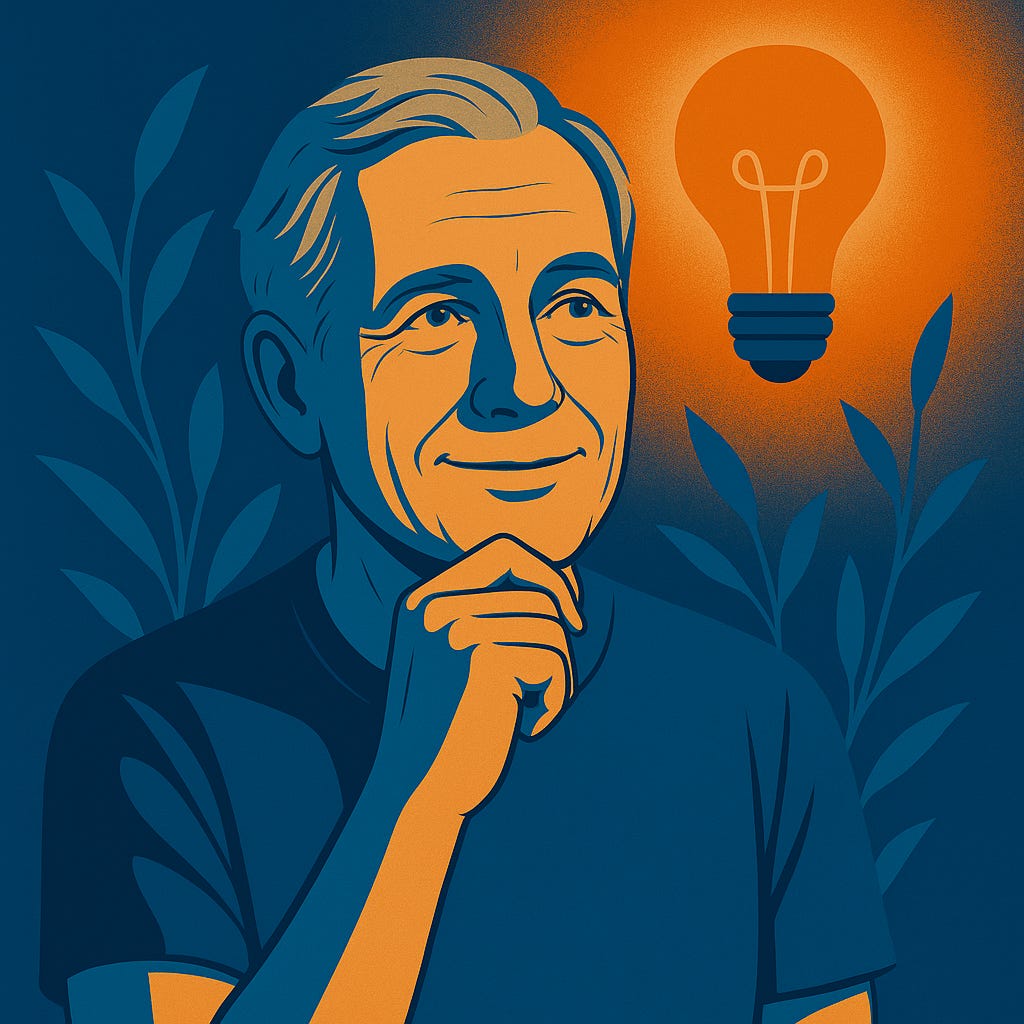🎼 Creativity: A Key to Healthy Aging?
New research suggests staying creative may help people preserve the flexibility of their semantic memory
Creativity has a special kind of association with youthfulness. When we’re younger, we’re less stuck in traditions and deeply instilled rules, and this can leave us more open to finding new ways of doing things.
At the same time, we can all think of many examples of spontaneity, originality, and imagination coming from people who are older. Even past the age of 80, Clint Eastwood directed American Sniper, Frank Lloyd Wright designed the Guggenheim Museum, and Chuck Berry released his final album right before dying at the age of 90.
How are some people able to remain creative into their later years and what does it do for their psychological well-being?
A new study suggests that older adults who maintain high levels of creative thinking have more youthful brain network properties—specifically, more flexible and well-connected semantic memory networks. Creativity may be a real-life fountain of youth, helping to preserve the brain’s ability to form unique and meaningful associations across the lifespan.
🎨 Creativity across the lifespan
In a 2025 study published in Cognition, researchers recruited 81 younger adults (average age ~20) and 77 older adults (average age ~78). All participants completed a series of verbal tasks designed to measure:
Divergent thinking—participants thought of as many creative uses as possible for everyday items like a shoe or a fork using the well-established Alternative Uses Task.
Semantic memory flexibility—assessed through both fluency tasks (naming as many items in a category as possible) and free association tasks (coming up with related words for a given word like “notebook”).
To explore how the structure of semantic memory might relate to creativity and age, the researchers constructed semantic memory networks for each group based on their data using advanced computational methods. In these networks:
Nodes represented words or concepts, while edges represented how often these words were associated together across participants.
Key metrics included:
How spread out or tightly connected the network is.
How segregated the network is into subgroups.
How flexible and robust the network is.
Participants were split into young vs old and also high vs low creativity, generating four subgroups for comparison.
The results showed a clear pattern of age-related decline in creativity: younger adults outperformed older adults on originality in the divergent thinking task. Importantly though, the older group was highly diverse—some people were lower in originality while others were almost as creative as the younger groups.
Creativity correlated with more youthful brain network structures. Young adults with the highest creativity showed the most flexible, connected, and resilient networks, while older adults with the lowest creativity showed the most rigid networks. In contrast, older adults with high creativity had networks that looked similar to young adults, suggesting that their creativity may have helped to preserve certain youthful network properties.
We can’t know for sure from this study whether greater creativity throughout life helped to maintain semantic memory networks or whether people with healthier brains overall simply show more creativity and stronger networks. But the researchers posit that creative activities are in fact a crucial behavior in healthy cognitive aging. By remaining creative throughout adulthood, we reinforce flexibility and resilience in the way our brains store, integrate, and access information.
We shouldn’t view creative pursuit as a luxury reserved for the young, but rather as an important exercise that serves to reshape and protect our mental maps. When we engage in creative tasks, we explore new associations, break boundaries between concepts, and reorganize our semantic memory to keep it flexible and interconnected.
So creativity may do much more than produce great art and innovation. By supporting the integrity of our semantic memory networks, it may help us generate new ideas and remain verbally fluent.
⭐️ Takeaway tips
#1. Treat creativity as a mental workout, not just a personality trait
Engaging in creative tasks—writing, sketching, brainstorming—may help keep your semantic memory network flexible, just as physical exercise helps your body stay fit. Generating original new ideas often depends on combining different concepts or types of mental information in unique ways, and stronger mental networks allow these links to happen.
#2. Reframe everyday tasks as opportunities for creative thinking
Even if you struggle to find time for hobbies, you can reimagine common routines by injecting creative demands into them. For example, coming up with alternative uses for objects, new recipes with what’s in your fridge, or unexpected solutions to small problems, can all exercise your creative instincts with small, daily mental stretches.
#3. Creativity doesn’t need to retire
Many people slow down their creative pursuits as they age into more rigid habits and routines. But creativity can grow deeper, richer, and more personally meaningful over time. Whether you're 30, 60, or 90, continuing to challenge your artistic flair and idea generation can help keep your mind more flexible and your life more fulfilling.
“It is of the nature of idea to be communicated: written, spoken, done. The idea is like grass. It craves light, likes crowds, thrives on crossbreeding, grows better for being stepped on.”
~ Ursula K. Le Guin



Really interesting study! It reminds me of one of my old violin teachers - she's passed now but she was in her mid 90s and still so creative, she was always painting and hosting music events, I think her passion for music kept her far more active than the average person her age, it was so impressive to witness.